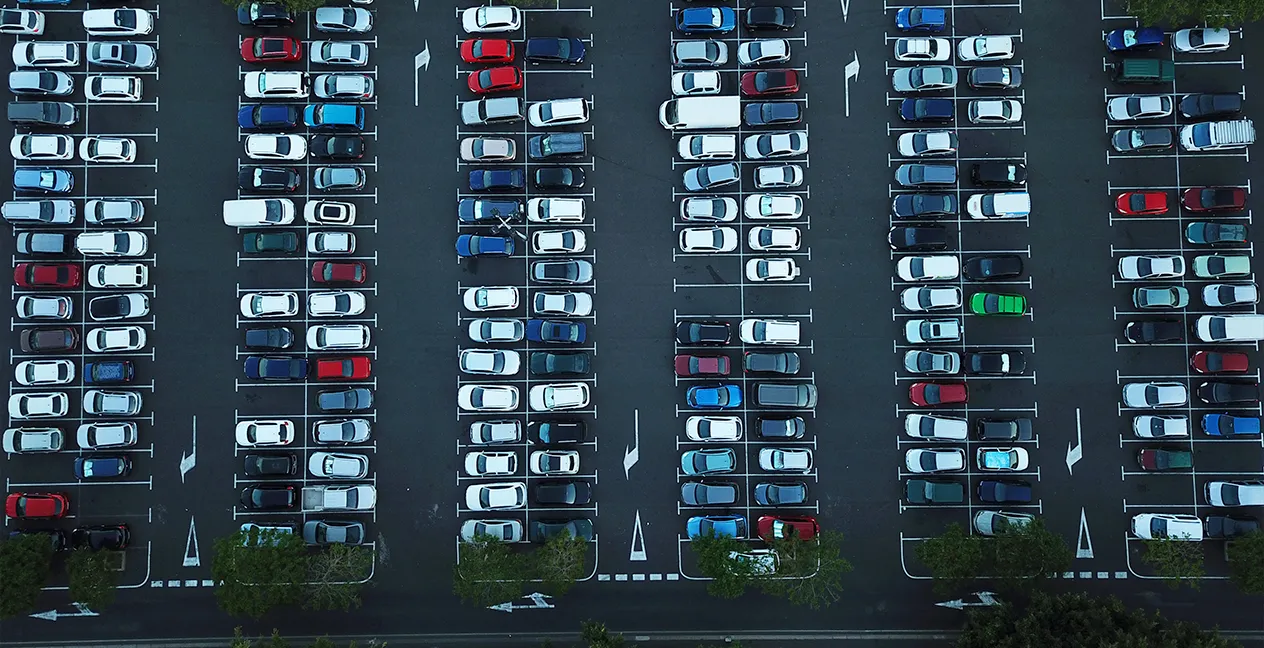
Created by Ana Faustino at Monday, 23 May 2022
Questions about stopping and parking
First of all, it is important to distinguish between stopping and parking a car. Stopping is when the car is immobilized for short periods of time, for passengers, loading or unloading, and presupposes that the driver is ready to resume driving whenever he or she prevents or hinders other vehicles from passing.
Parking is the immobilization of a vehicle that is not considered a stop and is not motivated by circumstances of its own or of the traffic.
The rules for stopping and parking are different if you are inside or outside a town. Outside localities, whenever possible, you must stop or park outside the traffic lane and, if this is not possible, you can stop in the traffic lane, as close to the right as you can and in the direction of travel.
If we're talking about within localities, you must stop or park in the designated spaces or on the carriageway, as close as possible to the right-hand edge and in the direction of travel. Remember to always leave the necessary space for vehicles entering and exiting buildings and make sure you leave your car completely stationary.
.
Stopping and parking are prohibited:
On traffic circles, bridges, tunnels, level crossings, underpasses or overpasses and in all places with poor visibility;
Less than 5 m to either side of intersections, junctions or traffic circles;
Less than 5 m in front of and 25 m behind signs indicating the stopping of public passenger transport vehicles, or less than 6 m behind such signs when these vehicles are traveling on rails;
Less than 5 m before and at pedestrian crossings;
Less than 5 m before and in lanes marked for cyclists;
Less than 20 m before vertical or illuminated signs, if the height of the vehicles, including their load, obscures them;
In cycle lanes;
On directional islands;
On the central signs of traffic circles;
On sidewalks and other places intended for pedestrian traffic;
On the carriageway whenever it is marked with a continuous longitudinal line and the distance between it and the vehicle is less than 3m.
Outside localities, it is also forbidden to stop or park within 50 m of each other:
Crossroads;
Junctions;
Traffic circles;
Curves or speed bumps with reduced visibility;
Parking in traffic lanes;
Stopping on the carriageway, unless it is impossible to do so outside the carriageway, and always as close as possible to its right-hand edge, parallel to it and in the direction of travel;
It is always forbidden to stop on or off the carriageway on a freeway or lane reserved for cars and motorcycles.
.
Parking is prohibited:
Impeding vehicular traffic or forcing the use of the part of the carriageway intended for the opposite direction;
On the carriageways;
In the second row;
In all places where it impedes access to vehicles that are properly parked, their exit or the occupation of vacant spaces;
In places where people have access;
In places where vehicles gain access to properties, parks or parking spaces;
In places where vehicles access properties;
In places where there is access to parks or parking spaces;
Less than 10 m to either side of level crossings;
Less than 5 m either side of fuel stations;
In places reserved, by means of signs, for the parking of certain vehicles;
Agricultural vehicles, industrial machinery, trailers or semi-trailers when not coupled to the tractor, except in specially designated parking areas;
In limited duration parking zones when the respective regulations are not complied with;
Vehicles displaying any information with a view to their transaction, in parking lots;
It is always forbidden to park on or off the carriageway of a freeway or road reserved for cars and motorcycles.
.
To avoid unpleasant surprises, take a few precautions on your travels. When you go somewhere, make sure you have a suitable place to park your car. If you don't, opt for public transport or a bicycle, which will save you a lot of hassle.
If you know how long you'll need to keep your car parked, make sure it's legal and secure for the whole time, without hindering traffic or pedestrians and without visible personal belongings, to avoid muggings.
.
.
.
Source: imt-ip.pt
Translated with DeepL.com






